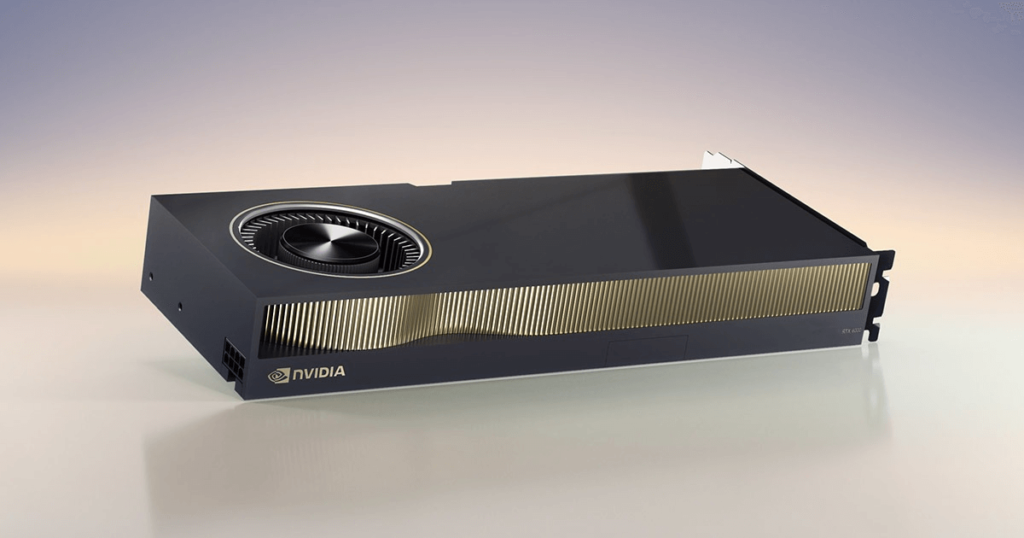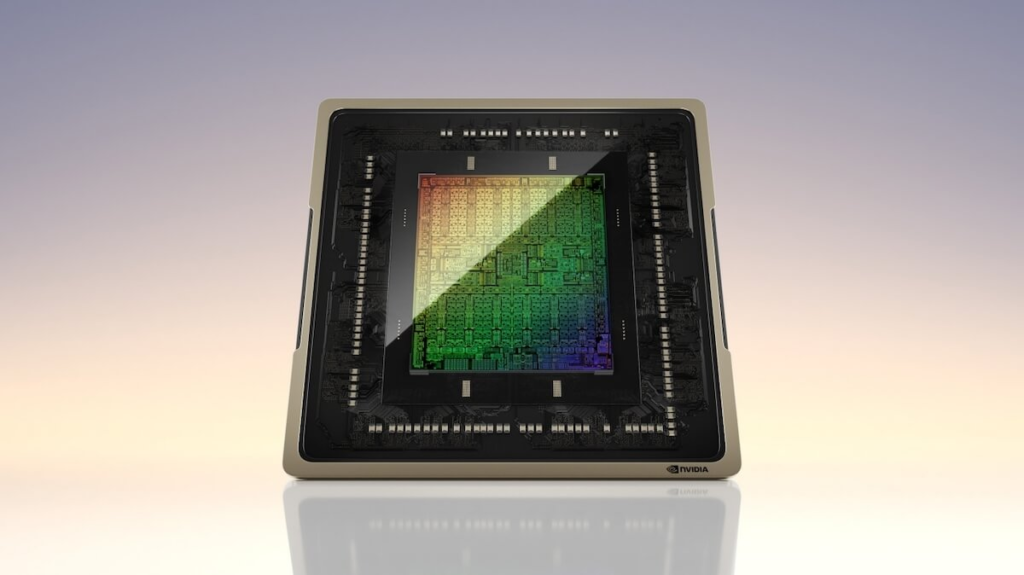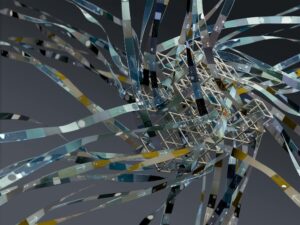If you’ve been keeping up with the tech scene recently, you’ve likely caught wind of NVIDIA’s RTX 6000. Is it truly the next innovation in GPU technology, or just chatter driven by speculation and hopeful thinking?
In this piece, we’ll delve into the core question: Is the RTX 6000 real? We’ll sift through the rumors, assess the facts, and offer expert perspectives to help you discern hype from reality. Whether you’re a gamer, content creator, or tech aficionado, this guide will equip you with clear insights on the happenings and implications for the future of GPUs.
What is the RTX 6000?

Before we question the reality of the RTX 6000, let’s clarify the subject. The RTX 6000 is speculated to be NVIDIA’s upcoming professional-grade GPU, purportedly designed for 3D rendering, AI development, and scientific computing tasks. It’s anticipated to belong to NVIDIA’s Ada Lovelace or Blackwell architecture, contingent on timing.
However, here’s the twist: NVIDIA hasn’t officially announced the RTX 6000. So, is it legitimate, or merely a fabrication of rumor mills? Let’s dissect this further.
The Origins of the RTX 6000 Rumors
The chatter about the RTX 6000 picked up momentum at the start of 2023, fueled by leaked information, industry speculation, and NVIDIA’s historical product cycles. Here’s an unfolding timeline of the rumors:
- Early 2023: Tech forums and social media buzzed about a potential RTX 6000 GPU, with some claiming insider knowledge.
- Mid-2023: Online leaks of benchmarks and spec sheets emerged, implying that the RTX 6000 would excel in professional tasks.
- Late 2023: Industry analysts and tech influencers contributed to the credibility of the rumors, heightening interest.
Though these rumors captivate, skepticism remains vital. Let’s scrutinize the evidence.
Is the RTX 6000 Real? The Evidence
1. NVIDIA’s Product Cycle
NVIDIA traditionally releases new GPUs every 18 to 24 months. Given that the RTX 40 series (based on the Ada Lovelace architecture) debuted in late 2022, the next-gen could emerge in late 2024 or early 2025, aligning with projected timelines for the RTX 6000.
2. Leaked Specs
Leaked information proposes that the RTX 6000 will consist of:
- 24,576 CUDA cores (a substantial increase from the RTX 4090’s 16,384 cores)
- 48GB of GDDR6X memory
- PCIe 5.0 support
- Advanced ray tracing and AI capabilities
While intriguing, these specs lack confirmation from NVIDIA.
3. Industry Insights
Tech analysts such as Jon Peddie and Moore’s Law Is Dead have alluded to the existence of a high-end professional GPU within NVIDIA’s plans. Yet, they caution that details remain speculative.
Why the RTX 6000 Matters
If real, the RTX 6000 could significantly influence several sectors. Here’s why it’s vital:
1. Professional Workloads
The RTX 6000 is rumored to target workstation applications like 3D rendering, video editing, and AI development. For professionals, it could result in expedited workflows, superior outputs, and capabilities to manage more complex initiatives.
2. Gaming
While chiefly aimed at professionals, advancements from the RTX 6000 could filter into consumer GPUs, enhancing gaming performance and functionalities.
3. AI and Machine Learning
NVIDIA’s GPUs are pivotal in AI endeavors, and the RTX 6000 could elevate operations. Its purported AI features may catalyze advancements in fields such as natural language processing, computer vision, and autonomous driving.
Real-Life Applications of the RTX 6000
To gauge the RTX 6000’s potential impact, let’s consider some practical applications where this GPU could excel:
1. 3D Animation and Rendering
Envision producing blockbuster-grade animations in notably less time. The rumored capabilities of the RTX 6000 could transform this vision into reality, enabling artists to expand their creative boundaries.
2. Scientific Research
From simulating climate models to genetic data analysis, the RTX 6000 might hasten scientific research, fostering prompt discoveries and innovations.
3. AI Development
AI researchers could leverage the RTX 6000 to train more comprehensive, intricate models, paving paths for enhancements in sectors like healthcare, finance, and robotics.
Challenges and Considerations
Despite its promise, the RTX 6000 might present certain challenges and considerations:
1. Price
Professional-grade GPUs are typically costly, and the RTX 6000 may follow suit. Projections suggest a price tag upwards of $5,000, which could deter users.
2. Power Consumption
High-performance GPUs often come with elevated power needs. The RTX 6000 reportedly has a TDP of 500W or higher, potentially demanding specialized cooling solutions.
3. Availability
NVIDIA’s top-tier GPUs customarily experience initial shortages, leading to inflated secondary market prices. Readiness is crucial for prospective RTX 6000 buyers.
Expert Insights: What the Pros Are Saying
To bolster our discourse, here are viewpoints from industry experts on the RTX 6000:
- Jon Peddie, President of Jon Peddie Research: “NVIDIA’s next-gen professional GPUs are expected to concentrate on AI and ray tracing performance, potentially revolutionizing the workstation sector.”
- Moore’s Law Is Dead (YouTube Tech Analyst): “The RTX 6000 could transform professional operations, but entails significant costs and power demands.”
- Tom’s Hardware: “According to NVIDIA’s roadmap, the RTX 6000 is projected to undergo considerable architectural enhancements, making it indispensable for professionals.”
How to Prepare for the RTX 6000

If the RTX 6000 excites you and you wish to be ready for its release, consider these steps:
1. Save Up
With a forecast cost of $5,000 or more, the RTX 6000 might be expensive. Begin saving to manage potential expenses.
2. Upgrade Your Workstation
Ensure your setup can accommodate the RTX 6000’s power and cooling specifications. You might need to enhance your power supply, casing, and cooling system.
3. Stay Informed
Monitor NVIDIA’s official statements and reliable tech news outlets for up-to-date RTX 6000 information.
Frequently Asked Questions (FAQs)
1. Will the RTX 6000 be worth the upgrade?
For professionals necessitating top-tier performance in tasks like 3D rendering, video editing, or AI development, the RTX 6000 seems promising. For casual users, consumer-grade GPUs might remain sufficient.
2. What will the RTX 6000 cost?
Although NVIDIA hasn’t disclosed pricing, predictions indicate a cost above $5,000.
3. When will the RTX 6000 be released?
The RTX 6000 is anticipated to debut in late 2024 or early 2025, consistent with NVIDIA’s production cycles.
4. What industries will benefit the most from the RTX 6000?
Industries focusing on 3D animation, scientific research, and AI development are poised to gain the most from the RTX 6000’s potential features.
Conclusion: The Future of Professional GPUs
The RTX 6000 promises to emerge as one of the most thrilling GPUs recently. With anticipated performance upgrades, cutting-edge architecture, and AI functionalities, it could revolutionize professional computing scopes.
While official NVIDIA disclosures are pending, the RTX 6000 distinctly hints at computing futures. For professionals, researchers, or tech enthusiasts, this GPU warrants attention.
So, is the RTX 6000 tangible? The conclusion is a definitive yes—and it’s set to reimagine the gameplay. Keep abreast for more developments, and gear up for the ensuing evolution in GPU tech.
By staying apprised and proactive, you’ll be prepared to harness the RTX 6000’s capabilities upon its release. Whether seeking peak professional performance or pioneering innovations, this GPU might be a gateway to futures.



